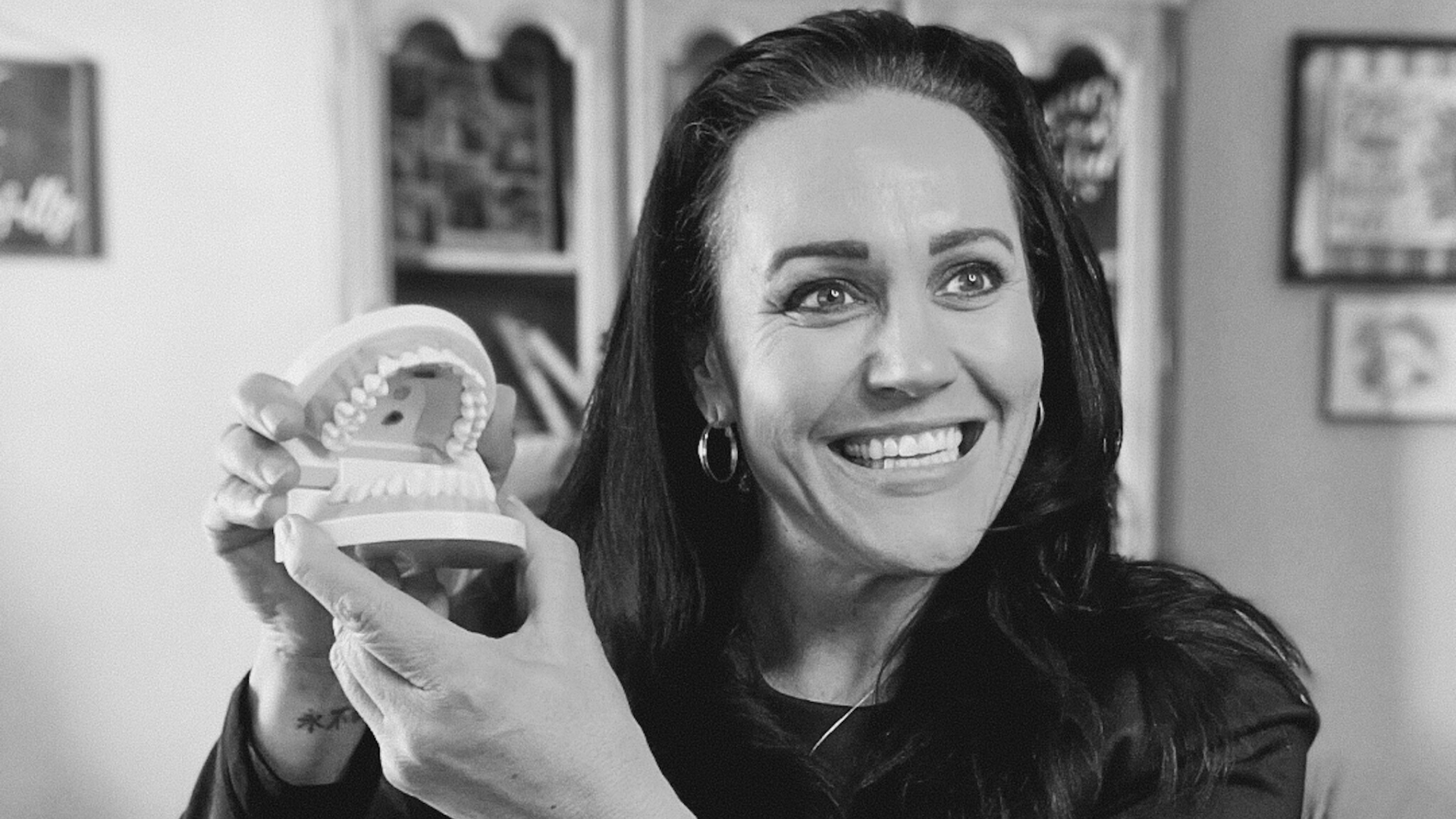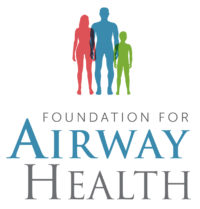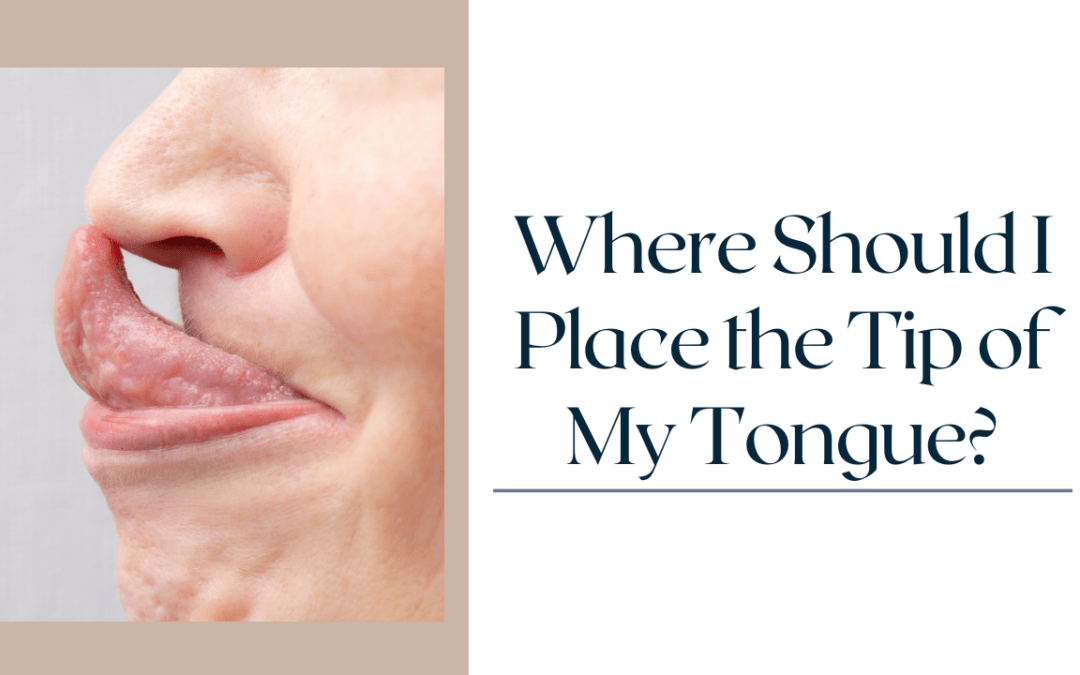Where Should I Place the Tip of My Tongue?
Why Tongue On the Spot Matters
One of the 4 goals of myofunctional therapy is that the tongue is on the spot. That position is considered correct tongue posture. In the big, myofunctional picture, I want your tongue fully living “tip to tail” in the roof of your mouth. I know it seems like a long shot, especially when you can’t do it now, but it is one of the things that we work on when you’re in myofunctional therapy with me.
The spot is a great place to park your tongue to facilitate getting the whole body of the tongue up. Now really, its more like the front third of the tongue and the front third of the palate, but we learn it as tongue on the spot for a few reasons. One of which is the vagus nerve ending.
If you’ve never heard of the vagus nerve, I encourage you to do some googling on it. The vagus nerve is the longest cranial nerve in the body. It’s like your motherboard. It is involved in the regulation of all major bodily functions, including breathing, digestion and relaxation. When the tongue is low, this vagal nerve ending is never stimulated. Have you ever watched a toddler suck her thumb? Where do you suppose that this thumb is pressing? Yep, normally the pad of the thumb is pressing right on the “spot”. This is calming to the child.

How To Find “Tongue On the Spot”?
One of the first things that I teach my clients is “tongue on the spot”. The tip of the tongue should be on or near the incisive papilla behind your maxillary central incisors. Ok…now in English! Do you feel that “speed bump” behind the top, front teeth? That is the incisive papilla. This is a great landmark for the “spot”. However, I have my clients back the tongue up just a bit if the tongue is pressing up against the teeth too much.
Once I have taught my client how to find the spot, then one of the first exercises that I teach is the “Spot Rub”. With this exercise you are just rubbing the heck out of the spot with the tip of the tongue. (I call it the “pizza burn” or the “coffee burn” spot. I don’t know about you, but I’m pretty sure this is the same location that I always burn with pizza or coffee. Sigh…..)
Rubbing this spot starts to wake up that nerve ending and also teaches your tongue where to go. Now, this doesn’t happen overnight, and many of my clients have to work really hard to build the awareness, but with smartphones these days, there are so many apps that make awareness building easy. Many of my clients find a timer app of some sort that gently reminds them every 30 or 60 minutes to “tune in” and see where their tongue is.
What Does it Mean if My Tongue Isn’t On the Spot?
If your tongue is not on the spot, then it means that you have a low, resting tongue posture. A low tongue posture can be detrimental for a number of reasons. First, when the tongue is low it causes mouth breathing. Mouth breathing creates many concerns, some of which you can explore here.
[We also shamelessly suggest the Ultimate Guide To Breathing!]
Second, when the tongue is low, it isn’t in the roof of the mouth doing its job of “nature’s palatal expander”. The tongue is used to expand the upper arch, which in turn helps guide the shape of the lower arch. So, you can see how this works. The maxilla is like the lid on a box. If the upper arch gets a nice, wide “U” shape then the mandible will follow suit. If the tongue is low, then the craniofacial growth can be affected. Insufficient or incorrect craniofacial development is the reason that there is a sleep-disordered breathing crisis.
How Do I Correct My Tongue Posture?
Where Can I Learn About the Process & Prices For Therapy?



Meet Carmen Woodland
Carmen found this path of passion years ago as a dental hygienist. After a stint in graduate school to earn her M.B.A., she decided that she needed to pivot. Her heart was no longer in scraping teeth, but making a much bigger impact on lives touched by myofunctional impairment.
Her story is personal and close to home as her sweet granddaughter, Linzee, was passed back and forth amongst doctors and therapists for years trying to figure out her speech, breathing, sleep, chewing and swallowing issues. It wasn’t until Carmen completed her post graduate myofunctional therapy training that she knew Linzee’s problem was a significant tongue-tie. Bingo.
Fast forward to now. Carmen is a crusader. A warrior. A voice for those who can’t find theirs, or who don’t have one.
She left clinical hygiene practice to start Impact Myofunctional Therapy. It has evolved from a way to make a living, into an obsession!
Carmen and her associates see clients all over the world and provide innovative, virtual therapy in the remotest of places.
In addition, Carmen also
- Teaches other dental hygienists, speech therapists & dentists how to implement myofunctional therapy through the Myofunctional Therapy Training Academy.
- Coaches dental offices on how to implement myofunctional screening into the daily practice
- Speaks in various settings
She is an airway provider for the Foundation of Airway Health, where she works diligently for the recognition, diagnosis, and treatment of airway-related disorders.
And last but not least, she is a proud member of several professional associations that afford her the opportunity to continue learning so that her team can help you. Her professional memberships include:


